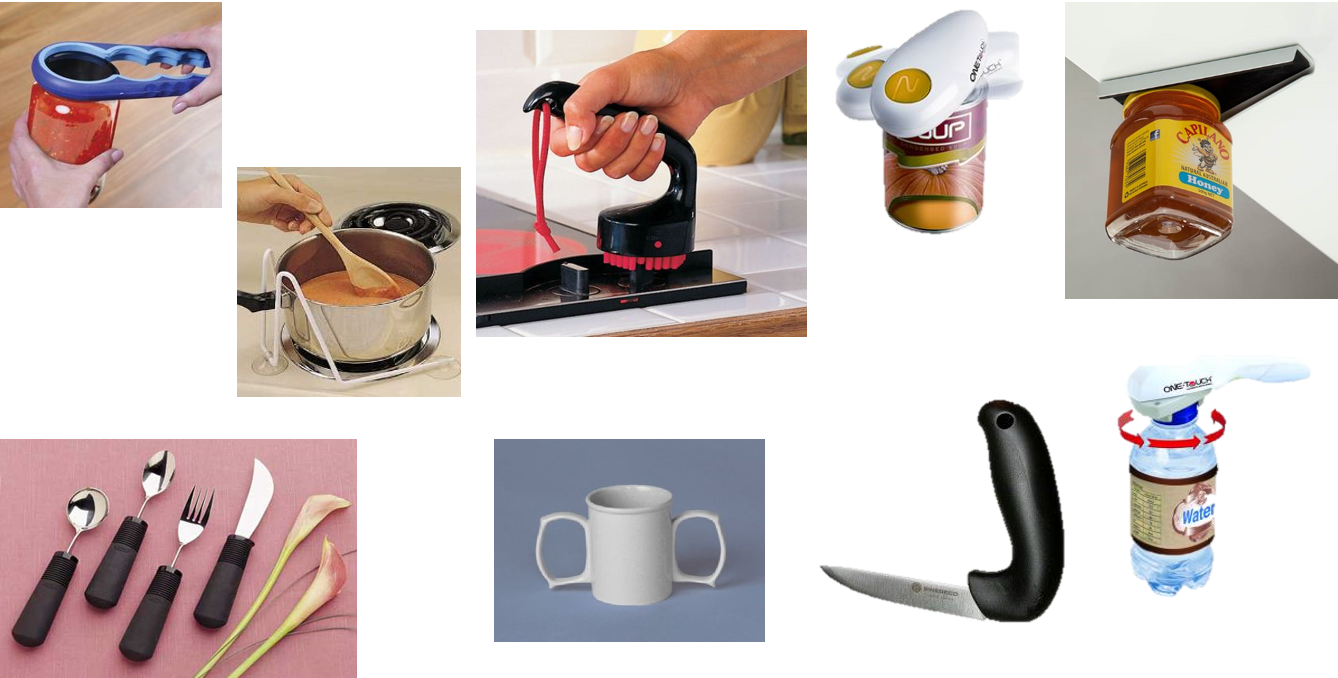Moving Lives, Shaping Futures | The Arthritis Movement>About Arthritis>Arthritis Insights>Protecting your Joints>Assistive Devices And Arthritis
By Katherine Curcuruto
The use of assistive devices is becoming more common for people with a range of chronic conditions. They can also be very useful for
people with arthritis. We asked Occupational Therapist Katherine Curcuruto to tell us more.

As an occupational therapist, a great part of my job is increasing people’s awareness, and educating them on the range of assistive
devices available. I then work closely with people to find which devices may work best to meet their needs.
An assistive device is any piece of equipment that enables or ‘assists’ you to complete day to day tasks that you need, want or have to do. Some examples include:
Some people with arthritis may have increased difficulty with using their hands. This can include reduced grip strength, difficulty doing or
maintaining certain grasps, and/or reduced fine motor movement. Other difficulties can include limitations with bending, joint stiffness
that affects movement, or ongoing fatigue and pain. This can lead to a reduced ability to be able to do daily tasks.
Assistive devices can be helpful for people diagnosed with arthritis, as they can help to maintain or promote function. Adding these devices
into daily tasks also helps with joint protection by placing less stress on the joints and helping to reduce the amount of energy we use to
do a task.
The assistive devices that best meet your needs and activity goals may vary. So it is important that you speak to your health professional to find what is right for you.
Taking the time to do your own research is also a great way of working out what devices may help you in your daily tasks.
If you are interested in exploring the options available, it is recommended to seek the advice of an Occupational Therapist. An Occupational Therapist can work with you directly at home, at work or in the community to determine the equipment that will best meet your needs.
To find an Occupational Therapist near you, talk to your GP or visit www.otaus.com.au.

Arthritis Queensland and Arthritis New South Wales are Members of The Arthritis Movement. Please note that there will be a transition period while our financial and administrative structures are finalised. During this time, we ask that you still donate and make other payments to Arthritis Queensland or Arthritis NSW depending on which state you reside in, which will continue to issue receipts.